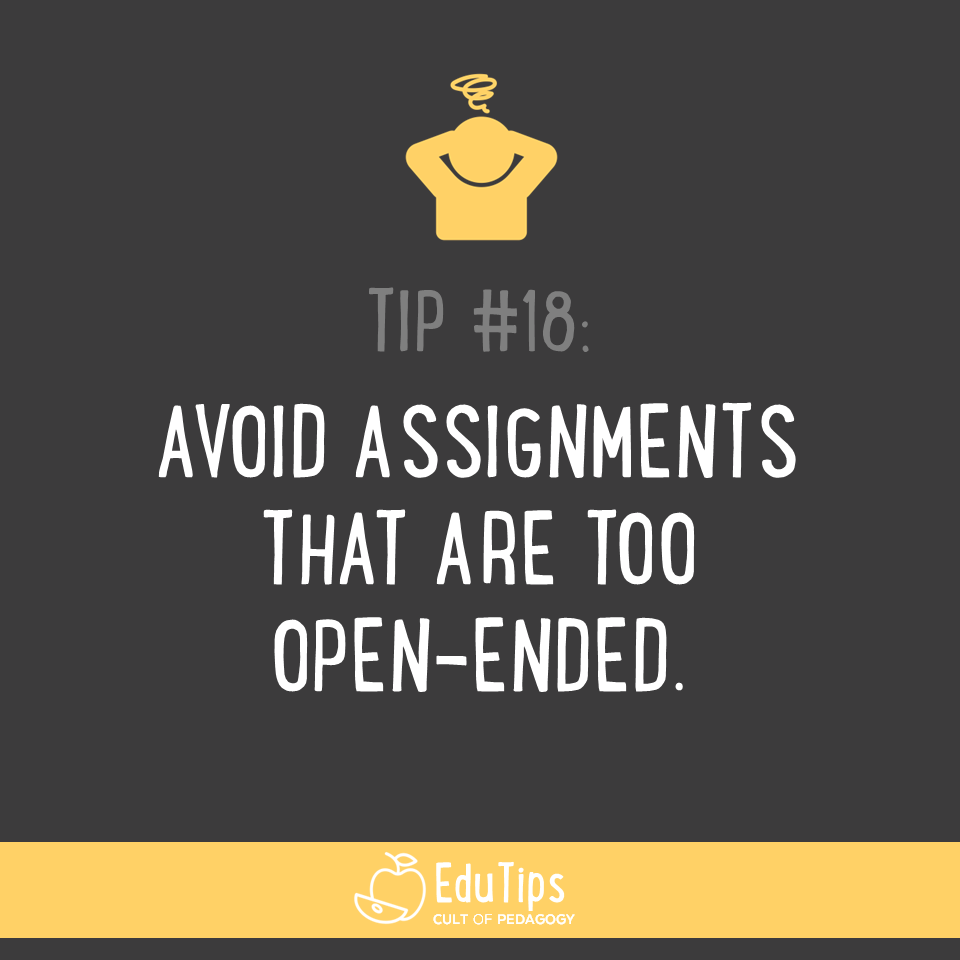Sponsored by CommonLit.

Many of us in education talk about how important it is to give students choice, to empower them to steer their own learning in a direction that’s meaningful to them. I believe this wholeheartedly — it drives me crazy to walk the halls of a school and see 26 nearly identical student art projects, or to hear that a teacher has assigned all four sections of his history class the exact same topic for a research project.
But there is another end to this spectrum: While it’s true that student choice has a lot of value, it’s possible to offer so much choice that it kind of backfires. When an assignment has little to no structure at all, students often respond with confusion, not creativity.
If you’re in an art class, for example, there’s a big difference between having your teacher say, “OK, make something!” versus saying, “Everyone is going to start with the same block of clay. Your task is to sculpt something that ___ (fill in the blank: represents an emotion, features five different textures, gives the viewer the feeling of weightlessness).” Those all offer a clearly defined problem to solve, but each one has a lot of room for creativity.
If you’re in a creative writing class, being told to “write whatever you want” isn’t really inspiring, unless you happen to already be a regular writer with an ongoing project. But if you’re told to write a piece that tells a full story in less than 100 words? That’s a creative challenge.
I remember experiencing this once as a middle school student myself. My teacher told us we had to write a paper, and the only guideline she gave us was that the topic had to have something to do with England. That was it. That was the whole assignment. I suppose this type of assignment might appeal to someone, but it just sent me into kind of a spiral — what did she mean “about England?” Like the history of it? The geography? The people? Architecture? Food? Could I do a single paper about Cadbury chocolate? Princess Diana? And how long did it have to be, anyway? Did we have to include a bibliography? A cover page?
Yes, I was a pretty type-A kid, but I’m not going to take the blame for this one. I don’t think this is a case of a grade-obsessed student being irritated by a teacher who is being innovative. It was a poorly constructed assignment, and that made it really frustrating to work on. I ended up doing kind of a travel guide of some of England’s main tourist destinations, and I’m pretty sure I got a good grade on it, but it was still a really unsatisfying experience; I never knew if I was on the right track, I didn’t really get the point of it, and because of that, I wasn’t able to truly exercise any kind of creative muscle. I remember the whole time I had this underlying shruggy feeling like, “Well, I guess this is what I’m supposed to do.”
If the assignment had had just a little bit more structure to it, I think I would have loved it. And this structure could have looked a lot of ways. Here are just two versions of what the prompt for that paper could have looked like:
- In your opinion, what has been England’s most significant contribution — positive or negative — to the world?
- What is one value that is characteristic of English culture? Show how human-made items in the country — physical products, media, traditions, even whole cities — illustrate that value.
If I had been given either of those assignments, I would have been much more intrigued and much more excited about the challenge presented by them. They are still very open-ended, but they at least give a student a starting point to go from.
So if your students are turning in work to you that’s a little uninspired, the problem might be that you’re not giving them enough freedom, OR it might be that you’re giving them too much. Keep experimenting until you hit the sweet spot in between.
See all EduTips here.
